'My favourite thing to draw is portraits of people I meet when I travel' - Illustrator Anjora Noronha on creating art
Posted by Yamini Vijayan on October 31, 2017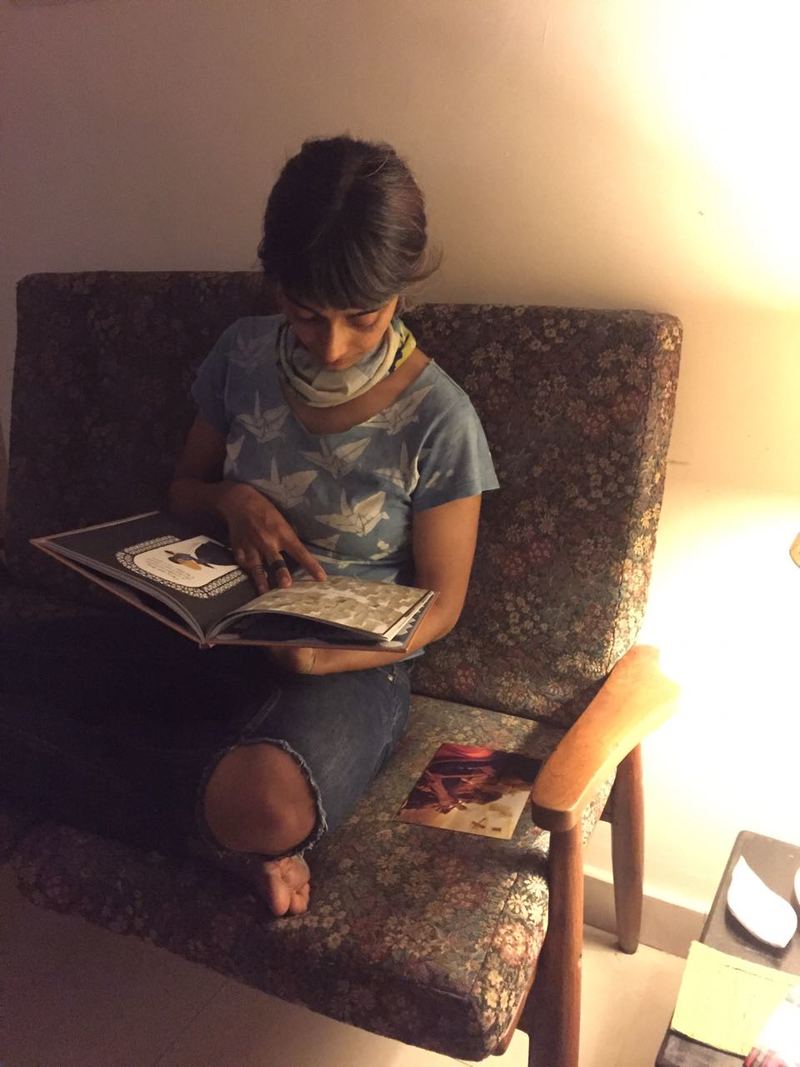
Anjora Noronha was one of the Illustrator Gurus for our #6FrameStoryChallenge in 2015, and we're delighted that she is illustrating a book for Pratham Books this year. Written by Sheila Dhir, this story is about the moving friendship between a goby fish and a pistol shrimp who live deep in the ocean.
Read a short interview with Anjora, in which she gives us a peek into into her illustration process.
What mediums do you most enjoy working with? How do you choose a particular medium for a story?
For personal projects, my drawing kit contains a sketchbook, watercolour postcards, a tiny bottle of Indian ink, a tiny tube of watercolour in ivory black, a mechanical pencil, a 'pencil' eraser, an aquapen, a MUJI gel pen (LOVE) and lots of tissues collected from all over the place.
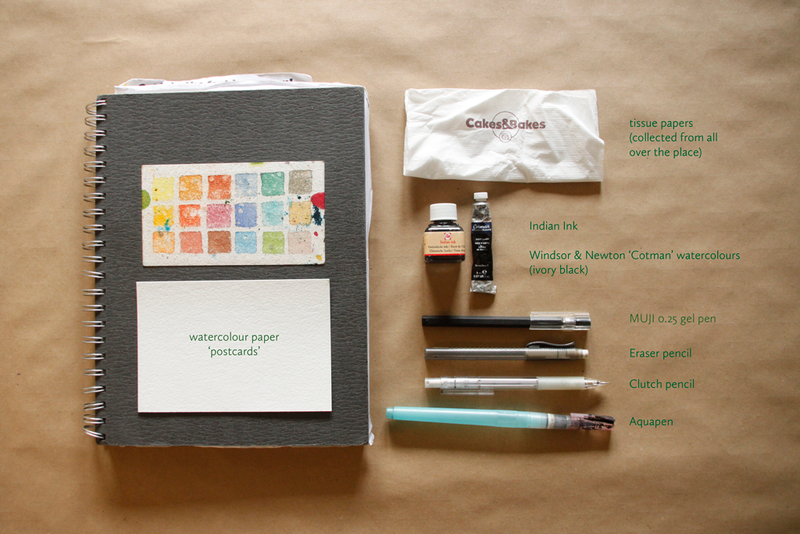
Other than that, I don't have a particular style or medium that I work with, so the start of a new project is always a mix of excitement and nervousness at discovering which medium is going to be the medium of choice. I somehow never know, and so each time I start, I have to go through sheets and sheets of paper and material, looking for what 'feels right'. 'What feels right' includes: how much texture I can achieve; if the essence of the medium suits the essence of the story (this is naturally highly subjective); and also very simply - if it excites me.
What kind of stories do you enjoy working on the most?
For children's books I prefer working on books that have a strong environmental theme. For adults I prefer working on stories about people and cultures. My favourite thing to draw is portraits of people I meet when I travel.
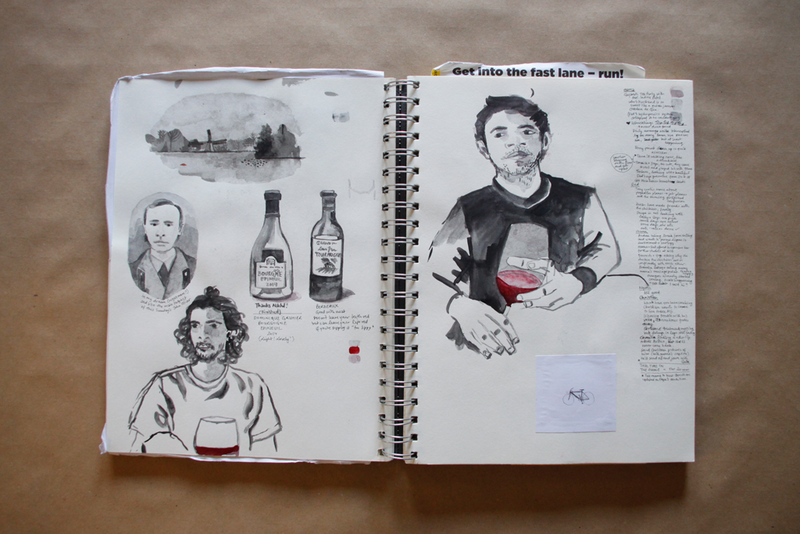
Which part of your work do you enjoy the most, and which part do you enjoy the least?
The most enjoyable part is when all the frames and page sketches have been approved and finalized, and it's time to colour them in. That is the most charming part of any project for me: I put on music, or a podcast, and spend hours glued to my desk in creative solitude. Most details have been decided by this stage, at this point it is a matter of turning off the thinking side of my brain and allowing things to happen on their own. I sleep at night excited about the next day of drawing. Even though I find it more challenging, I also love the character development stage because either I act out expressions and postures, or I ask someone to act them out for me. What I enjoy the least is scanning and cleaning the final artworks and preparing them for print. Following that, there's always the big existential angst about which font to chose, and at what size, with very few helpful cues from the universe.
This year, you’re illustrating a book for us on the symbiotic relationship between a goby fish and a pistol shrimp. We loved all the character sketches you made for this. What kind of preparation goes into illustrating a book for children?
Ideally, the initial stage would involve doing studies of the characters from life, but since I didn't have access to the two main characters in the story I'm currently working on, I watched as many YouTube videos and read as many articles as I could. Then I filled many pages with drawing after drawing of the characters, repeating them over and over again. My aim was to get to know these two so that I could intuitively draw them in any situation. This was followed by a style and colour test, which is the phase where I try to discover which medium I will be working in. For this book, it is colour pencil, which is a medium I have never worked in before. I tweaked my colour palette multiple times and drew one page over and over again, changing individual details with every attempt to discover what textures and effects I could achieve with them. I have stopped using sites like Pinterest to find inspiration.
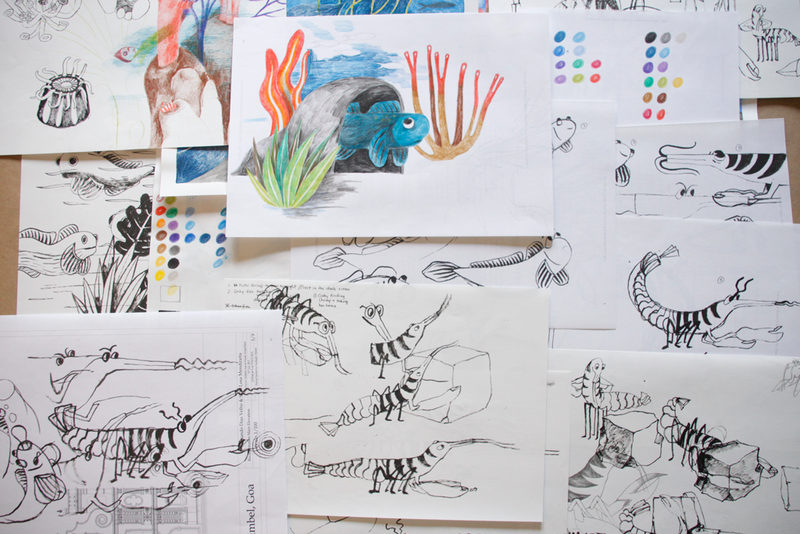
The third phase has been to thumbnail the entire book, and incorporate feedback. The practical side of illustrating for children cannot be ignored, and I like collaborating with editors as they are involved in the entire process but are not stubborn and attached to everything (as illustrators tend to get). This is where we have reached so far. Some pages need to be tweaked, some are good to spend afternoons of coffee and music with. Each thumbnail will be fully detailed and shared with the editors before being coloured in. The last stage is scanning, cleaning and layout. After that I hand over the files and wait for the printed books to come by mail :)
Who are some of the illustrators whose work you follow closely?
For children's books: Carson Ellis and Júlia Sardå Portabella. http://www.carsonellis.comhttp://www.carsonellis.com has a Q&A section on her website, and one of the things she speaks about is her limited gouache colour palette, and how - when she added a colour to it - it was quite ground-breaking for her. Júlia Sardå Portabella seems to work mostly digitally, so I turn to her work for clues on how to work digitally - a new medium for me. Recently I discovered the work of Joann Sfar, and have bought every book of his that I can get my hands on. The colourful and surprising artwork of Brecht Evens. One of my favourite young, contemporary artists is this guy called Ward Zwart, who puts up a lot of his work online, but is very mysterious otherwise. (He did reply directly to a message I left him on Instagram though :) Stephanie K. Birdsong, mostly known as shoulda-woulda-coulda: for her daily and very quirky warm up paintings in her Planner. Oh, to be so productive on a daily basis! And of course, the work of my peers in India, some of whom I know personally, and whose creative journeys I have been following for a while now.
How do you deal with creative blocks?
In three ways. The first is that I break down what I have to do into micro steps, and then push myself to complete one micro-task after the other, all the while telling myself that I can change everything at a later stage. The point is just to gain momentum, which always leads to enthusiasm. Most of the time, producing a lot of work that doesn't work leads to something that does work, and when that moment comes, the Battle against the Block is won. The more involved I get with an artwork, the more enthusiastic I am to delve into the details and spend time on it. The second is that I try to meet someone who is currently in a good creative place / moment. There is nothing that kindles my excitement about the work that we illustrators and designers do, than having a long, dense conversation about the nitty-gritties of the creative process. There hasn't been a time when it hasn't left me fired up to sit down at my own table and MAKE. The third is to not allow myself a break after completing a big project, so that I don't lose the rhythm and flow, but I'm still working on that, I almost always end up taking a short break :P
Anjora Noronha grew up in Vienna, moved back home to Goa, studied at the Srishti School of Art and Design in Bangalore, worked in Delhi, and then studied more at the University of Barcelona. She currently lives between the Indian tropics and a windy little town somewhere in northern Europe, where she works as an illustrator on a variety of projects ranging from comics, children’s books, and historical books of places long forgotten.
comment (1)Meet Mantra4Change, the Non-Profit Empowering Teachers and Students to Improve Quality of Education
Posted by Remya Padmadas on February 20, 2017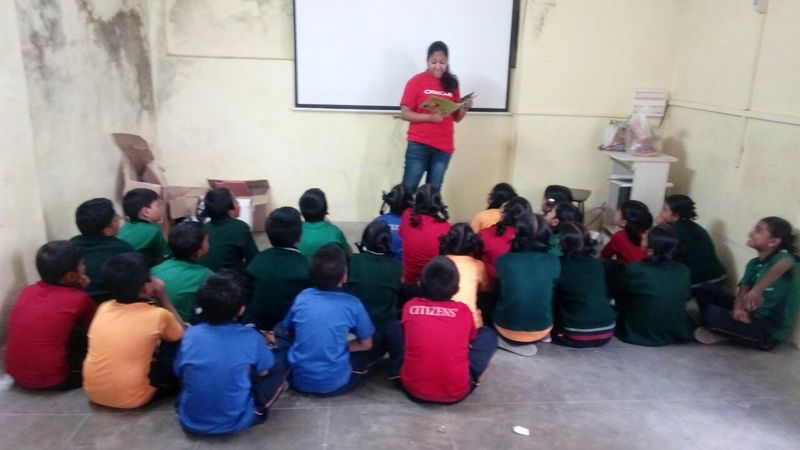
A quiet, young boy begins to visit his school library every day after classes are over. At first, he goes to just look at the colourful illustrations in the books brought to the school by smiling didis and bhaiyyas. When asked why he stays back, he replies, “This is the world I want to stay in. This makes me happy.” He slowly begins interacting with his fellow students who came to the library abd begins to make friends. The books have opened up his world; at school and beyond. The didis and bhaiyyas who stocked the library are from the NGO, Mantra4Change.
The idea for Mantra4Change took shape in the minds of Khushboo Awasthi and her partner Santosh More in 2010. “Deep inside us was the strong belief that if there is anything that can change the future, it is education. When children don’t have access to quality education their life choices shrink. It was these beliefs that triggered the concept for Mantra4Change.” Khushboo elaborated. At the time, Santosh was a Teach For India (TFI) fellow while Khushboo was pursuing a Masters programme. But they both knew that they wanted to start something of their own in the development sector.
It was 2013 when Khushboo and Santosh founded Mantra4Change and started working on their education project in part-time capacity. In 2014, Santosh joined Mantra4Change full-time and in 2015, Khushboo did the same. They began formally recruiting members through the TFI career portal and Azim Premji University campus recruitment process. In a span of a few years, Mantra4Change has grown from a 2 member team to a small organisation of 12 passionate individuals.
Mantra4Change’s key initiative is ‘STEP’: School Transformation and Empowerment Project. Through STEP and a two-year partnership to ensure its efficacy, Mantra4Change has till date had a positive impact on over 9000 students and 350 teachers in 13 schools. Most of the schools they work with cater to underserved children in the not-so-popular narrow alleys of urban and peri-urban Bengaluru.
A trickle down effect
To effectively implement STEP, the organisation first contacts the head of the school and then works down from there, connecting with each part of the school team on a personal level to understand their needs and challenges. In one of the schools, teachers in the primary school mentioned the need for better books for children to read. Mantra4Change reached out to Pratham Books and helped acquire Library in a Classroom kits. This kind of rapport building, ensures that within 4-6 months 70% of staff are onboard with the programme.
Empowering children
Khushboo and her team believe that students must be empowered and encouraged to step out of their comfort zone. She shared a story of how 12 students from Mantra4Change partner schools attended an International Geography Youth Summit.
“We had to convince the teachers that the children were indeed ready to take the stage. At the conference, to the surprise and delight of the children, two of their groups got standing ovations from the audience. When they came back, you could see the confidence in them. They came up to the team and their teachers, and said, ‘thank you so much, ma’am, for giving us this opportunity. We would never have experienced this.’ We saw an an opportunity and took it to our students and they grabbed onto it. It’s their hard work at the end of the day.” remembers Khushboo.
Joyful reading material in their mother tongue
Under STEP, Mantra4Change is also implementing a library programme in which they set up libraries to make books more accessible to children. Mantra4Change has teamed up with Pratham Books to provide the children colourfully illustrated, multilingual stories. Describing the books and the library programme, one student told us, “The illustrations are very nice, the story is funny!” adding that she had begun reading at home more after the library had been set up.
In addition to the libraries, content from StoryWeaver is downloaded onto computers in the library for children to read and enjoy. There is an added excitement when the children get to read the e-books on the computers. Mrs. Morris, a librarian who conducts weekly storytelling sessions at the Citizen’s School, Bengaluru said, "The e-books work like a reward. The kids love operating the computer because they do not get a lot of opportunities to do so otherwise. I use the e-books for partner reading and it is working great. Children read, then discuss what they read. This helps develop their comprehension and communication abilities.”
“The whole atmosphere in the library when the children come is magical! Even those who can’t read fluently yet like to come and touch the books, see the pictures and make up their own stories using their imagination. It’s beautiful to see.” Khushboo added.
Mantra4Change’s passionate team is determined to make a difference in the lives and learning of the children in the schools they work with “Our team is here because they really want to make a change and affect education at the school level.” Mantra4Change hopes to double the number of schools they work with as well as the team’s size by May 2017. We’re sure they’ll get there, one step at a time!
Be the first to comment.